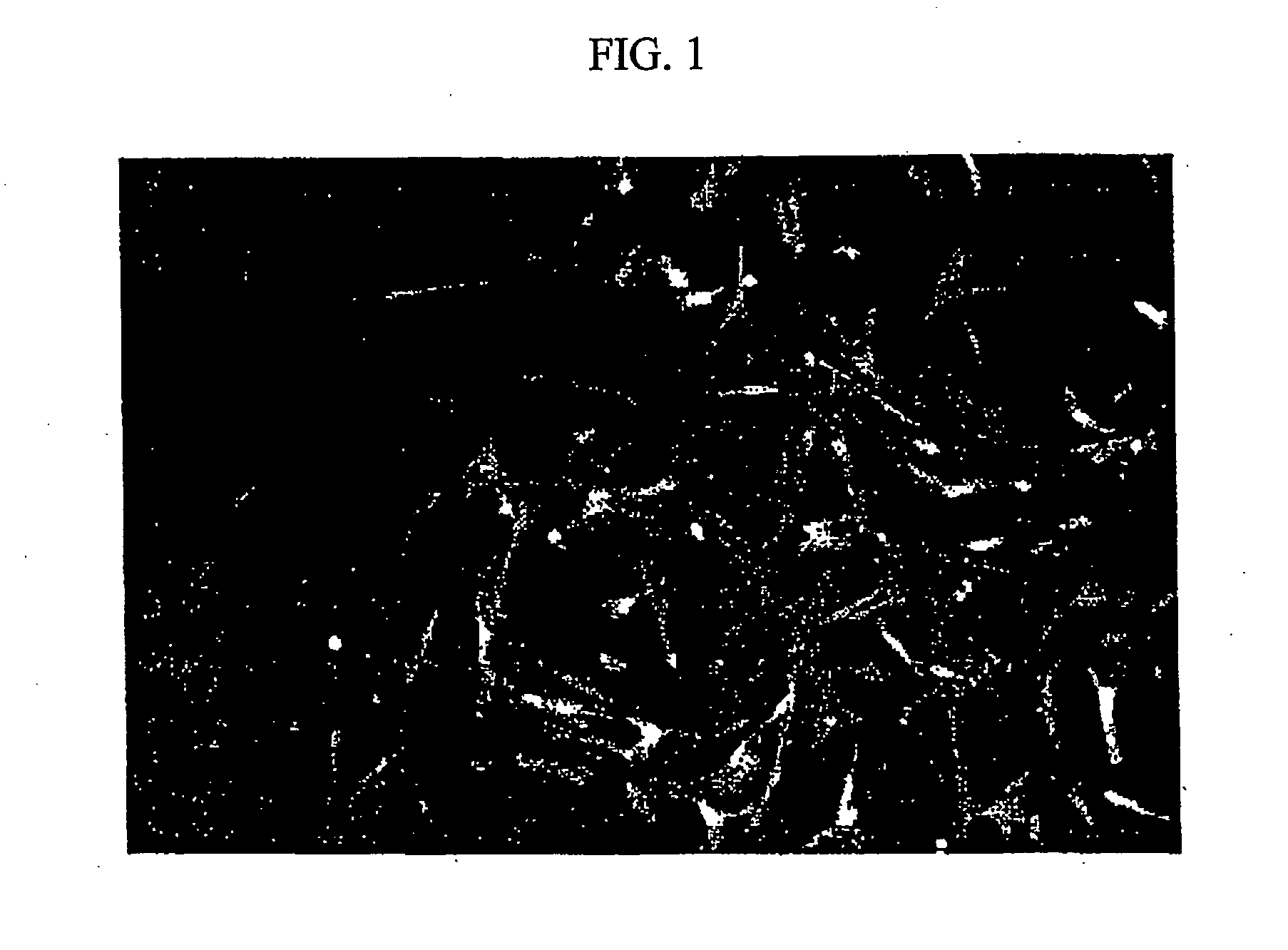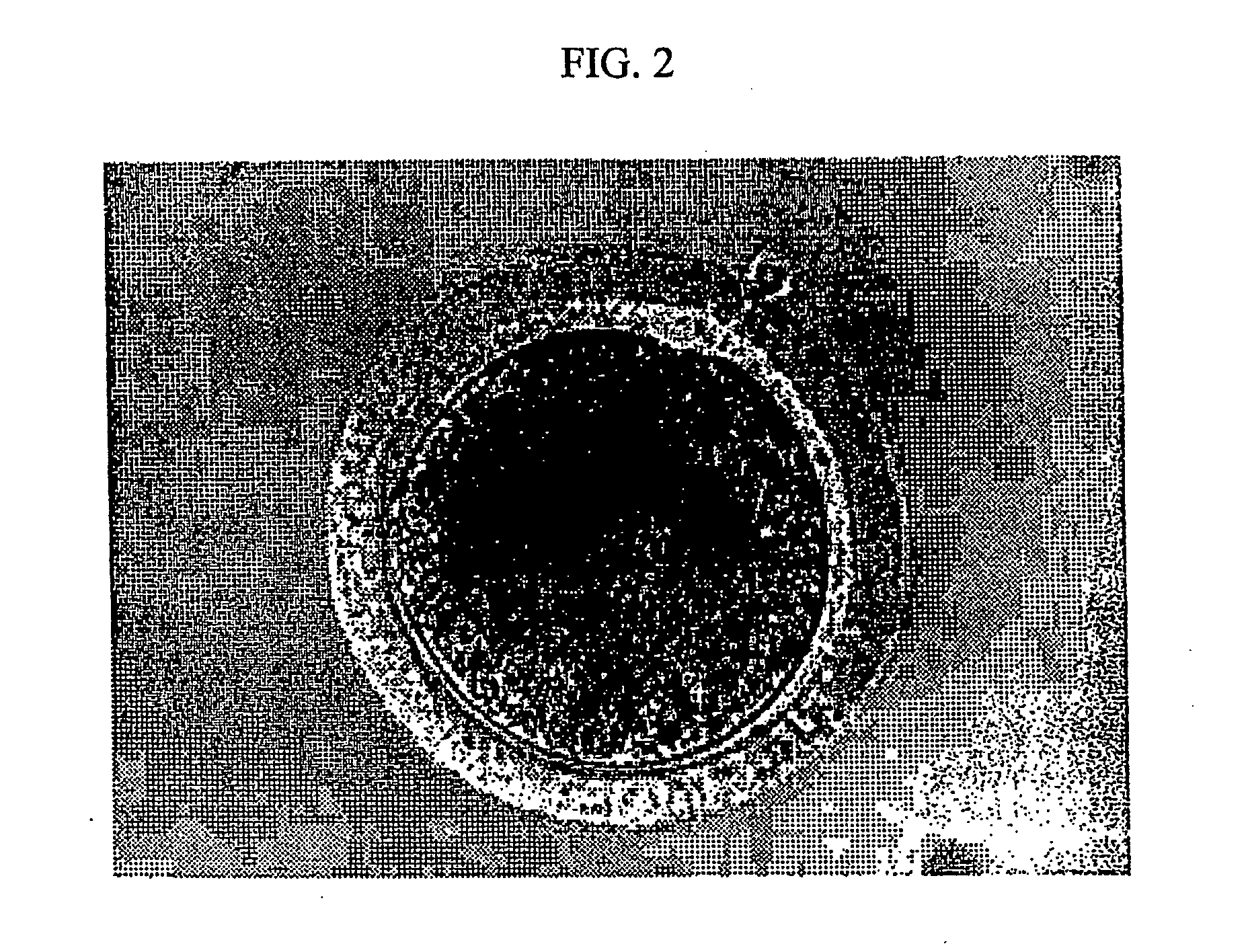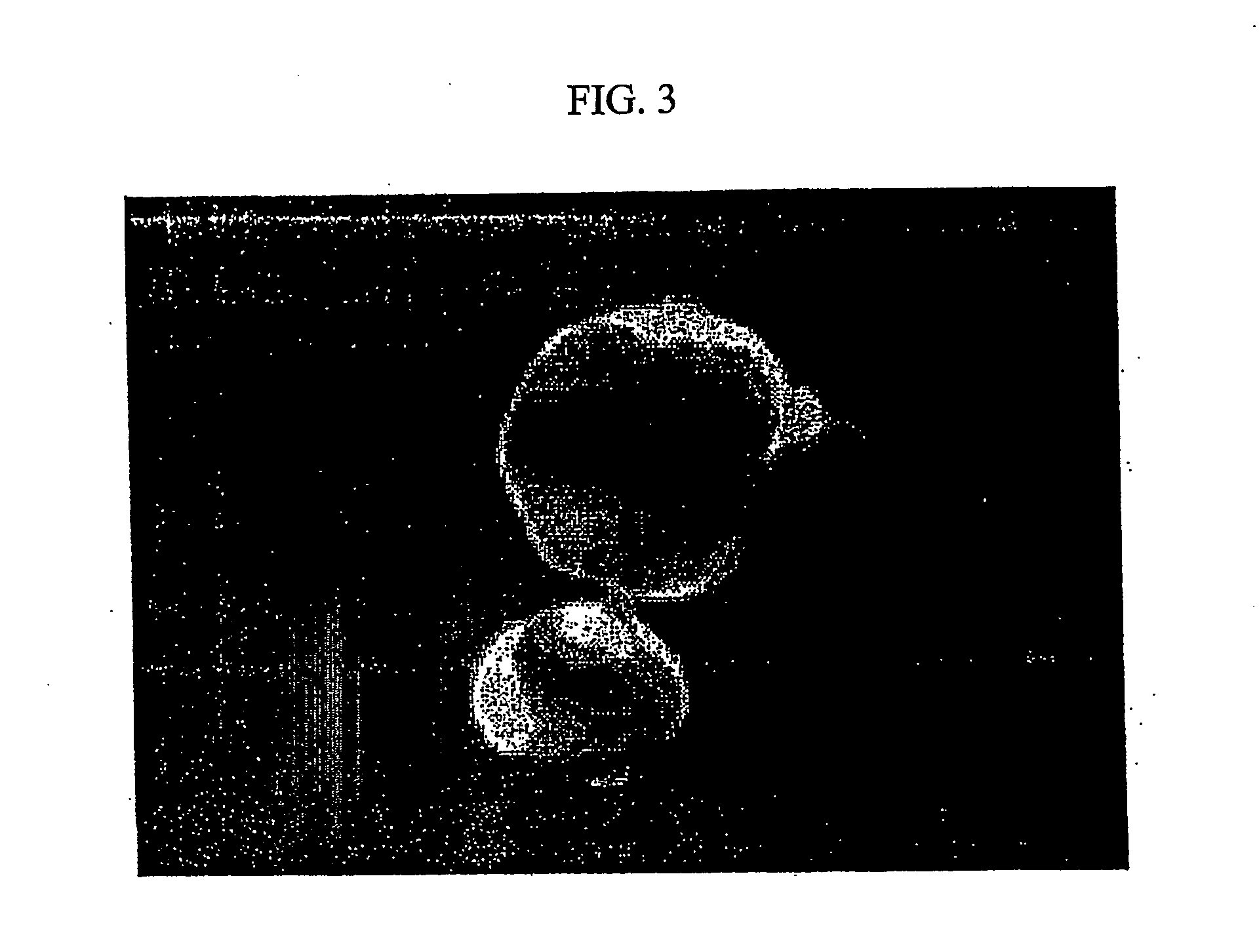"Gfp-transfected clon pig, gt knock-out clon pig and methods for productions thereof
a technology of gt knockout clone and pig, which is applied in the field of gfp-transfected clone, gt knockout clone and methods for production thereof, can solve the problems of no satisfactory method capable of solving the problem, serious deficiency of organ supply sources, and shortfall of human organs for surgical transplantation
- Summary
- Abstract
- Description
- Claims
- Application Information
AI Technical Summary
Benefits of technology
Problems solved by technology
Method used
Image
Examples
example 1
Preparation, In Vitro Culturing and Maintenance of Nuclear Donor Cells
[0068] After collecting pregnant pig uteruses, the following operations were performed under an aseptic environment. 30 day-old fetuses having a crown-rump length of about 25 mm were mainly isolated. The fetuses surrounded by the amniotic membrane were isolated aseptically. After being removed of heads, four legs and viscera, the fetuses were washed several times with a phosphate-buffered solution containing some kinds of antibiotics and antimycotics. Fetal tissues were isolated from the fetuses in dishes containing 0.25% trypsin-EDTA using surgical scissors. The isolated fetal tissues were incubated in a 5% CO2 incubator at 38° C. for 30 min. Thereafter, trypsin was eliminated from the fetal pig tissues by several centrifugations, and the fetal pig tissue explants were then cultured in 10% FCS-containing DMEM (Dulbecco's Modified Eagle's Medium).
[0069] When reaching 90-100% confluency, cells were subcultured, a...
example 2
Screening of Pig BAC Genomic Library for GT Gene
[0070] Before screening a pig BAC genomic library, to obtain a positive control, pig genomic DNA was primarily prepared as follows. After obtaining about 5 g of ovary from a 6 month-pregnant Landrace sow, the obtained ovary was finely cut and ground in a mortar containing liquid nitrogen to destroy tissues. The ground tissue was treated with proteinase K at a concentration of 11 mg / ml and subjected to phenol extraction, thus giving pig genomic DNA.
[0071] Screening of pig GT gene was carried out using a pig BAC genomic library. To obtain single clones, the library comprising three pools were screened sequentially. The primary pool is composed of 17 vials alphabetically marked from A to R (excluding K), the secondary pool is composed of 96-well plates with each of 15 individual pools, and the tertiary pool consists of 384-well plates for each pool of the secondary pool. First, using the known pig GT cDNA (GeneBank Accession No.: AF2215...
example 3
Construction of a Vector Carrying a Knocked Out GT Gene
[0073] A rough restriction map of pig GT gene (GeneBank Accession No.: AF221517, 3.9 kb) was obtained using the Webcutter program (http: / / www.firstmarket.com / firstmarket / cutter / ). A probe for southern hybridization, below, was prepared as follows. A DNA fragment of 351 bp in size, which corresponds to a part of the pig GT gene, was obtained by PCR and purified by gel electro-elution after electrophoresis on a 8% PAGE gel, and then labeled with α-32P[dCTP] using a random primer labeling kit (Life Technologies, USA).
[0074] To isolate BAC DNA containing pig GT gene, 1 μl of cloned E. coli from the 8F of the tertiary pool identified in Example 2 was primarily inoculated in 3 ml LB broth (CM+), and incubated at 37° C. with agitation of 300 rpm for 12 hrs. Then, the cultured E. coli was inoculated again in 500 ml LB broth (CM+), and incubated for 16 hrs under the same condition. BAC DNA from the large-scale cultured E. coli was puri...
PUM
| Property | Measurement | Unit |
|---|---|---|
| humidity | aaaaa | aaaaa |
| humidity | aaaaa | aaaaa |
| concentration | aaaaa | aaaaa |
Abstract
Description
Claims
Application Information
 Login to View More
Login to View More - R&D
- Intellectual Property
- Life Sciences
- Materials
- Tech Scout
- Unparalleled Data Quality
- Higher Quality Content
- 60% Fewer Hallucinations
Browse by: Latest US Patents, China's latest patents, Technical Efficacy Thesaurus, Application Domain, Technology Topic, Popular Technical Reports.
© 2025 PatSnap. All rights reserved.Legal|Privacy policy|Modern Slavery Act Transparency Statement|Sitemap|About US| Contact US: help@patsnap.com



